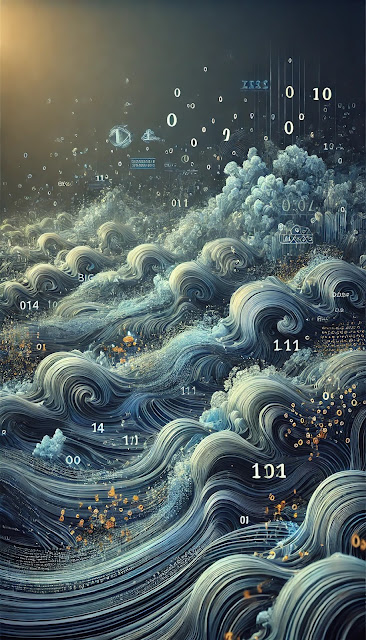[Feri Sulianta] Contemporary poetry is a vast and evolving genre that reflects the changing landscapes of modern society, culture, and language. It often departs from traditional forms, embracing innovation in structure, language, and themes. Unlike classical poetry, which typically follows established patterns such as sonnets or odes, contemporary poetry offers poets the freedom to experiment with form, voice, and content. One of the most striking aspects of contemporary poetry is its diversity. This article will explore the key features of contemporary poetry and delve into some of its various types, including concrete poetry, which stands out as an innovative approach to poetic expression.
Key Features of Contemporary Poetry
Contemporary poetry is known for its emphasis on:
- Free Verse: Modern poets frequently use free verse, which abandons regular rhyme schemes and meter. This allows for greater flexibility in form and expression, giving poets more freedom to focus on meaning and emotion.
- Experimentation: Contemporary poets often experiment with language, syntax, and structure. This can involve playing with line breaks, word spacing, and typography.
- Diverse Themes: Modern poets explore a wide range of subjects, from personal identity and social justice to technology and environmental issues. There is no limitation on what a contemporary poem can address.
- Minimalism and Visual Presentation: Many contemporary poems are concise, focusing on imagery and emotion rather than elaborate narrative structures. Additionally, some poems use visual arrangements on the page to enhance their meaning.
- Emphasis on Subjectivity: Personal experiences and individual perspectives are central to much contemporary poetry. The exploration of the self and human emotions is often a driving force.
Types of Contemporary Poetry
Contemporary poetry comes in a variety of forms, each offering unique ways to engage with language and meaning. Below are some prominent types of contemporary poetry:
1. Concrete Poetry
Concrete poetry, also known as visual poetry, is a form that emphasizes the visual arrangement of words on the page. The physical layout of the poem is crucial to its meaning, as the text may take the shape of an object, symbol, or design related to the poem’s subject matter. In concrete poetry, words are not just read—they are seen. The arrangement of letters and words creates visual patterns that contribute to the poem's interpretation.
For example, a poem about a tree might be arranged in the shape of a tree, with each branch representing a different line of the poem. Concrete poetry blurs the line between visual art and literature, inviting readers to engage with both the visual and linguistic elements of the piece.
The pioneers of concrete poetry include Eugen Gomringer and the Noigandres group from Brazil. This type of poetry became particularly popular during the 1950s and 1960s and remains an influential form today, inspiring poets to explore new relationships between language and visual form.
2. Spoken Word Poetry
Spoken word poetry is a performance-based form of poetry that is meant to be recited aloud. Unlike traditional poetry, which is typically read on the page, spoken word is designed for live audiences. It often focuses on social and political issues, and it is characterized by its use of rhythm, repetition, and improvisation.
Spoken word poetry is a powerful form of expression that gives voice to marginalized communities and addresses themes like racial injustice, gender equality, and personal identity. Poets such as Maya Angelou, Saul Williams, and Amanda Gorman have used spoken word to connect with audiences on an emotional and intellectual level.
3. Confessional Poetry
Confessional poetry is a highly personal and introspective form of poetry that emerged in the mid-20th century. Poets in this genre often write about their own experiences, delving into themes such as mental illness, family dynamics, and personal trauma. Confessional poetry is known for its candidness and emotional intensity, as poets reveal intimate details of their lives.
Key figures in confessional poetry include Sylvia Plath, Anne Sexton, and Robert Lowell. Their work is often marked by a deep sense of vulnerability, as they explore the darkest corners of the human psyche.
4. Narrative Poetry
Narrative poetry tells a story through verse, often using traditional literary techniques such as character, plot, and dialogue. Unlike free verse or abstract forms of contemporary poetry, narrative poetry has a clear structure and often follows a linear progression.
While narrative poetry has ancient roots, contemporary poets have adapted it to reflect modern concerns and styles. It remains a popular form for poets who want to combine storytelling with poetic elements, allowing them to create immersive and engaging worlds within their work.
5. Ekphrastic Poetry
Ekphrastic poetry is a form that describes or responds to a work of art, often painting, sculpture, or photography. In ekphrastic poems, the poet reflects on the visual experience of the artwork, often interpreting it in personal or emotional terms. This form of poetry creates a dialogue between two art forms, encouraging readers to engage with both the poem and the artwork it describes.
Contemporary ekphrastic poetry invites readers to explore not only the poet's words but also the visual inspiration behind them, making it a highly interdisciplinary form.
Contemporary poetry is a dynamic and ever-evolving genre that breaks away from traditional conventions, embracing new forms, voices, and themes. With types ranging from the visually expressive concrete poetry to the emotionally raw confessional poetry, modern poets continue to push the boundaries of what poetry can be. Concrete poetry, in particular, exemplifies the experimental spirit of contemporary poets, merging visual art with literary expression. Whether through performance, visual arrangement, or personal reflection, contemporary poetry offers diverse ways for readers to experience language in fresh and meaningful ways.








